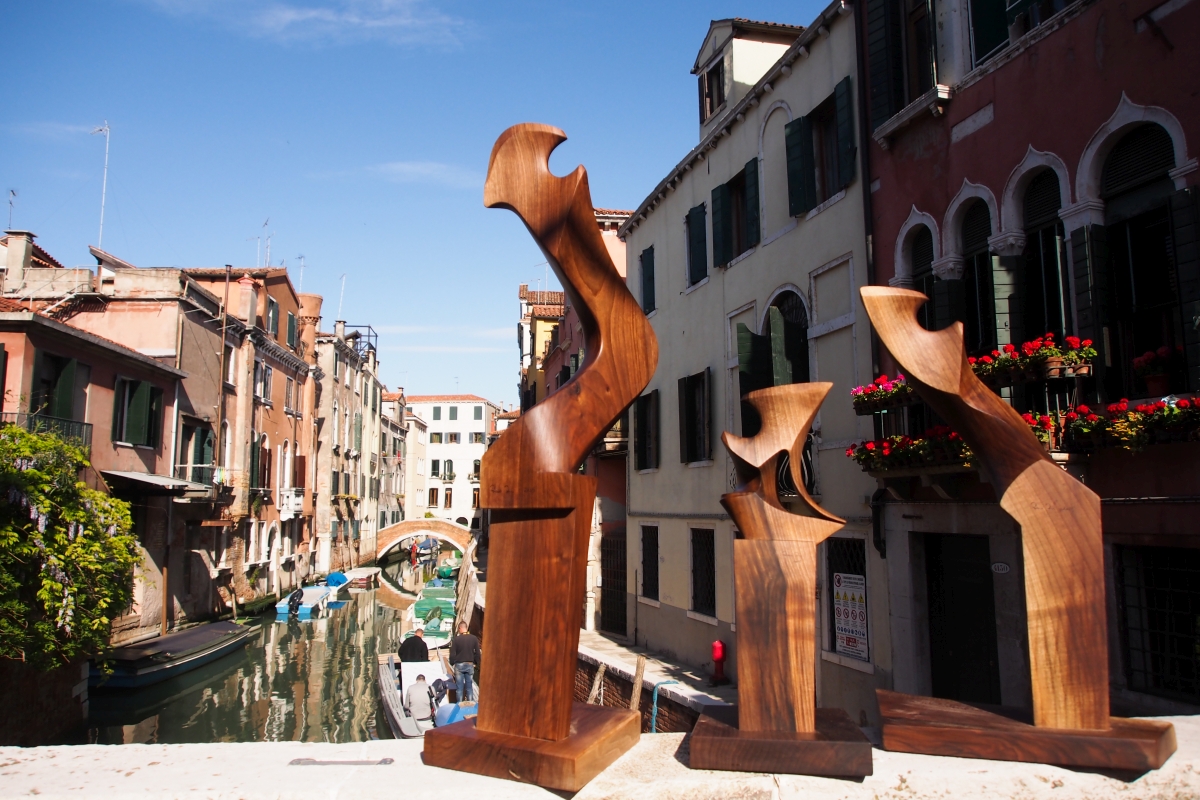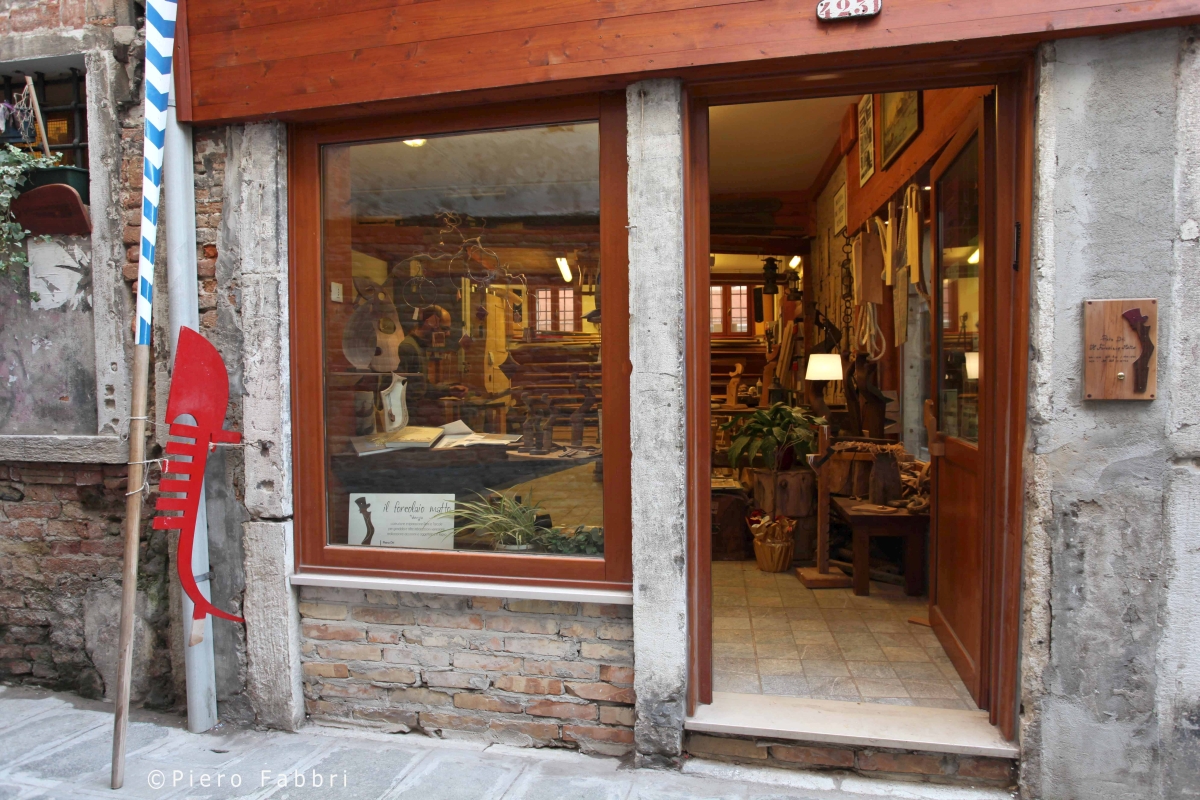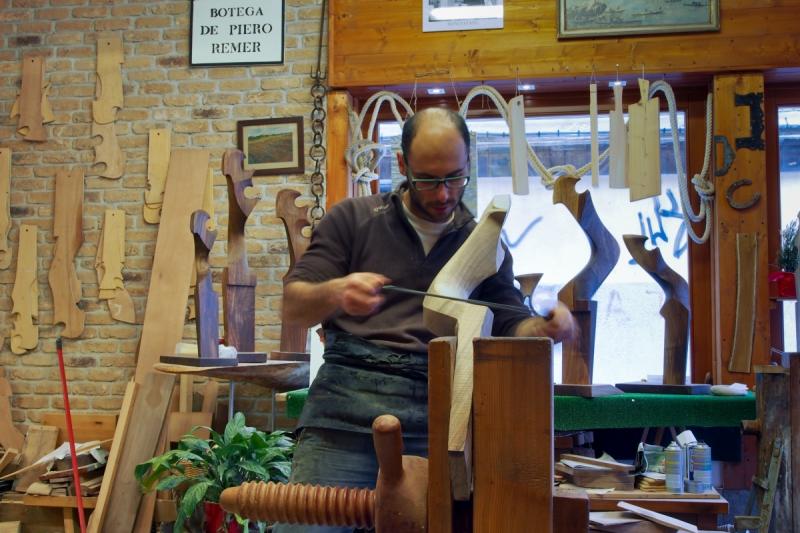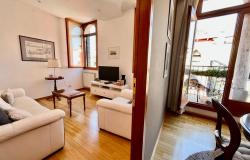An astronomer turned remèr: Venetian Piero Dri ditched stars and planets for oars and oarlocks. Piero chose to carry on an ancient profession that has been essential for the community of Venice for centuries: the remèr, a Venetian word for the artisan who crafts by hand oars (remi in Italian) and oarlocks (forcole) for Venetian boats. There are only four remèri left in Venice, and Piero is the youngest.
When he opened his workshop in Cannaregio in 2013, people around him thought he was crazy to embark in a business that seemed to pose more challenges than certainties, or any type of financial security. Hence the name Piero gave to his business, Il Forcolaio Matto (the crazy oarlock maker). And challenges he indeed has faced and continues to face, made all the worse by the pandemic, with gondoliers grounded and tourists gone, which for Piero means very little work.
Nonetheless, Piero has no second thoughts about the decision he took years ago.
“Yes, there are indeed difficulties, but I welcome them as challenges to make Il Forcolaio Matto ever better,” he says. “Venetians themselves are just as responsible for the decline of Venice as overtourism and the choices made by the local government are. At least I work with a clean conscience knowing I’m doing something good for my city, carrying on an activity that has been part of Venice’s history for a long time.”

The profession of the remèr has been documented since at least 1307, when remèri gathered in a guild; but it goes back even further, as La Serenissima based much of his wealth on maritime military power and trade. Thus the remèri performed a very important job, building thousands of oars and oarlocks for different types of boats.
The work of the remèr mainly consists in giving shape to pieces of wood by transforming them into oars and oarlocks. While we are all familiar with what an oar looks like, few may be aware of what a forcola (oarlock) is. If you have been to Venice and looked at a gondola, you may not even have noticed it, perhaps focused on the gondolier and his rowing movements; and yet, the gondolier wouldn’t even be able to make all those movements, to govern the gondola, or to stand for that matter, if it wasn’t for the forcola.
The forcola or oarlock, which today has become a true work of art, to the point that some aficionados buy them as pieces of furniture, is the support on which the oar pivots on Venetian boats, and gondolas in particular.

This is why the forcola is specific to Venice, created in Venice for the particular style of rowing and navigating that the city, with its myriad little canals, requires. Indeed, the narrow canals have forced the rower to perfect a type of rowing that performs better if standing, possibly high on the stern of the gondola. The forcola allows the gondolier to position the oar in various different positions depending on where he is rowing and to optimize the thrust; it allows him to row standing so that he can see clearly and maneuver more easily, to proceed straight, even though rowing on one side only, as well as to quickly extract the oar in case of need. This results in the so-called voga alla veneta technique (Venetian-style rowing), which employs one oar rather than two.
“The forcola exists only in Venice and it is for this reason that the remèr performs a job that is unique in the world,” says Piero. “It is an ancient craft, which must be performed with great passion, perseverance and extraordinary manual ability to provide those who row with an object that is aesthetically pleasing and absolutely efficient from a technical and functional point of view.”
Indeed the amount of manual technique and precision that goes behind the making of a forcola is quite astonishing, even more so in a world where everything tends to be made quickly and standardized. On the contrary, Piero’s work is all about customization and time, choosing carefully the type of wood, and crafting it into an oar or an oarlock, depending on the type of boat they are destined for and on the height and weight of the gondolier/rower. When working a piece of wood, the remèr must become familiar with it, understand its qualities and defects and work around them; rarely will he get it right away.

If there was one positive aspect that came out of the pandemic, Piero told me, is that many Venetians have rediscovered the pleasure of going rowing in their own city, now that the lagoon and canals aren’t overcrowded with boats and cruise ships serving the millions of tourists that visited Venice every year pre-Covid. (Incidentally, due to the fact that it involves both the arms and the legs, the ankles and the torso, the voga alla veneta is considered a well-rounded physical activity.)
“Venetians have come back to practicing the voga alla veneta as a sport, something I’ve been doing since I was five years old,” says Piero. “As a child, I crossed the lagoon on a boat with my grandfather and today, I remember the beauty of those moments when I carve the wood in my own artisan’s workshop.”
If you love Venetian history and crafts, you can commission Piero Dri a forcola, even a miniature one, as a souvenir or to decorate your home. Contact him through his website http://www.ilforcolaiomatto.it/en, and follow him as he works on his creations on Facebook and Instagram.














